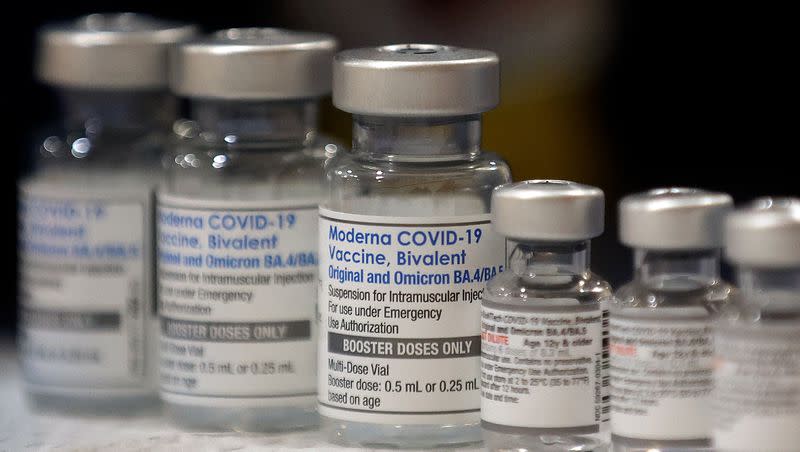Here’s why tens of thousands of COVID-19 vaccine doses were scrapped in Utah

Some 30,000 doses of the original COVID-19 vaccine have been trashed in Utah since the federal government’s decision last month to allow only the updated shots to be used in the United States.
The doses were disposed of by health care providers throughout the state, according to Cindy Wynette, COVID-19 immunization program manager for the Utah Department of Health and Human Services.
The U.S. Food and Drug Administration announced on April 18 that the original COVID-19 vaccine, known as monovalent because it only targets the original strain of the virus, is no longer authorized for use.
Related
Instead, the FDA said only bivalent vaccine that targets more recent versions of COVID-19 in addition to the original strain can now be used in the United States. The decision was backed by the Centers for Disease Control and Prevention.
The move is seen as simplifying COVID-19 vaccinations, available to anyone at least 6 months old.
Bivalent vaccine, first released last fall, had been offered only for booster doses. Now, even those getting vaccinated against COVID-19 for the first time will receive a single dose of the updated bivalent vaccine.
Most Americans are expected to need only one COVID-19 shot annually that’s been updated to protect against the latest versions of the virus. Those who are over 65 or immunocompromised are already eligible for an extra dose of the current bivalent vaccine.
Health officials are hoping to see more interest in the next round of COVID-19 vaccine, due in the fall alongside annual flu shots. Less than 17% of people nationwide — and just over 15% in Utah — got the updated booster shot.
“We’re not far off trend with other jurisdictions,” Wynette said. She said a majority of Utahns have been exposed to COVID-19 “one way or the other,” either by contracting the virus or through vaccination.
“So we have good antibody coverage out there. But the problem is, either one is going to wane. That’s why keeping up to date is really important,” Wynette said, blaming vaccine “exhaustion” for the low uptake of the bivalent booster dose.
“I’m not sure who didn’t have vaccine exhaustion. But we’ve learned how quickly this virus mutates and we’re able to provide that protection,” she said, by updating the vaccine. The current bivalent booster went after versions of the fast-spreading omicron variant.
Utahns appear to be losing interest in the vaccine.
Between January and April, the number of COVID-19 vaccine doses shipped monthly to Utah dropped by more than half, from nearly 79,000 to just under 31,000, according to information from the state health and human services department.
For bivalent doses only, the number fell from more than 45,600 in January to almost 25,000 in April, while monovalent doses went from more than 33,000 in January to just over 6,000 in April, the department said.
In the first week of May, the state ordered only 880 bivalent doses for Utah providers, despite an additional booster dose being authorized by the FDA and CDC for those 65 and older or who are immunocompromised.
Related
Wynette said nearly 500 doctor’s offices, pharmacies, local health departments and other providers in Utah order COVID-19 vaccine from the federal government as often as weekly through the state health and human services department.
Some providers in Utah also participate in a federal program that supplies COVID-19 vaccine to almost 400 national pharmacy chains like Walgreens and CVS, as well as to other entities in the state, she said.
Approximately 30,000 monovalent doses have been reported as “wasted” to state officials since the FDA’s April 18 decision, Wynette said, meaning they are unusable. That does not include any wasted doses Utah providers reported directly to federal authorities.
Related
Even though the national public health emergency for COVID-19 in place for more than three years ends Thursday, the federal government should have a “sufficient supply” of the current bivalent vaccine through the summer, Wynette said.
“The public health emergency ending means nothing for COVID vaccination, it’s availability, or its access to all,” she said, promising that “as long as we have that government supplied ... vaccine available, it will remain free of charge to all.”
That will change later this year, “when the vaccine moves into the commercial market,” Wynette said, likely when the vaccine gets updated again. A CDC advisory panel is expected to meet in June to discuss the coming changes to COVID-19 vaccine.

